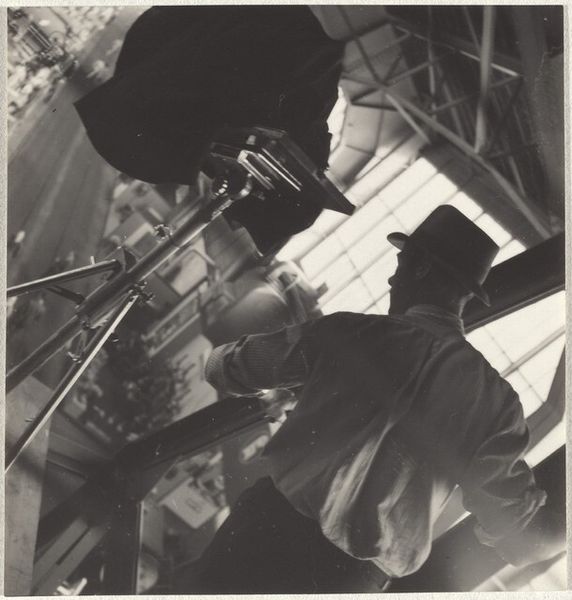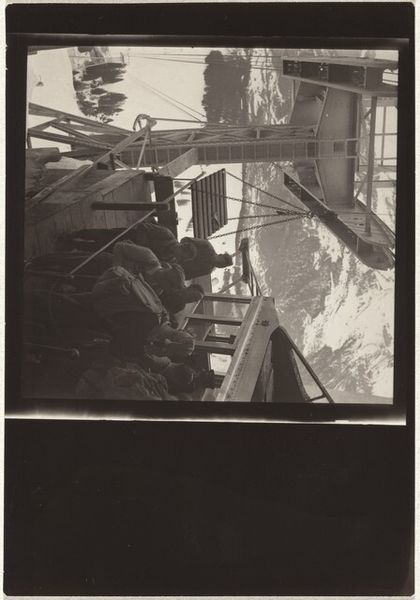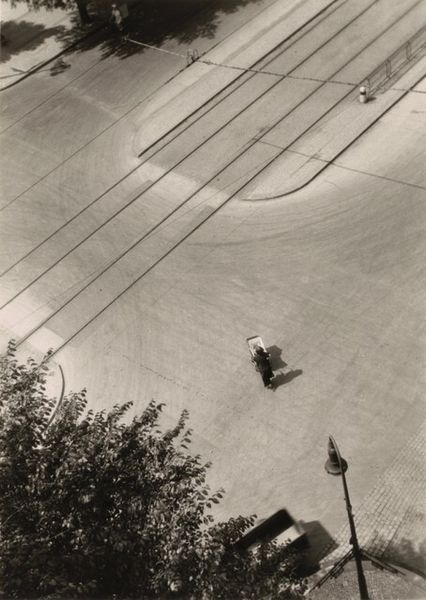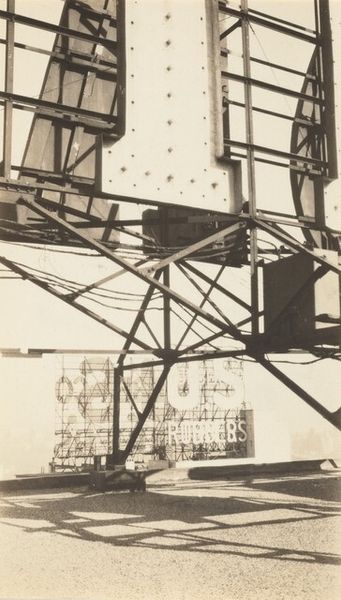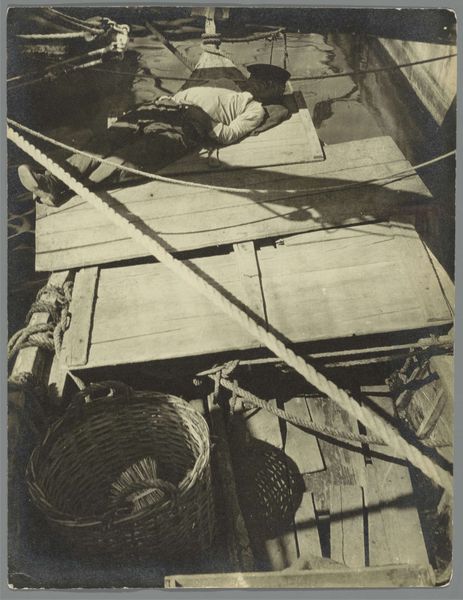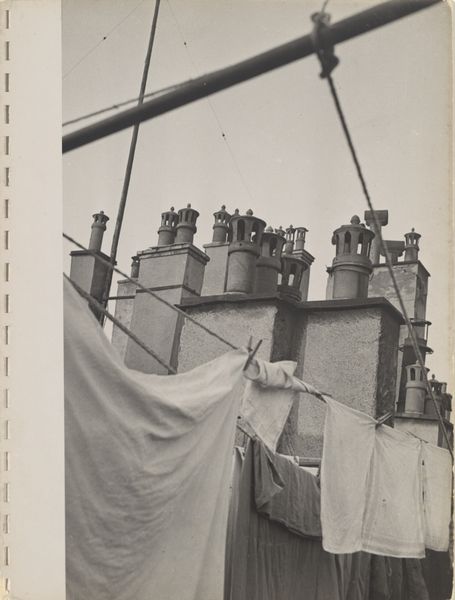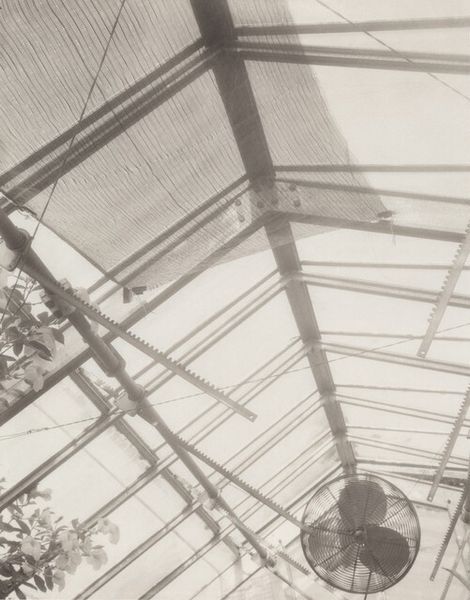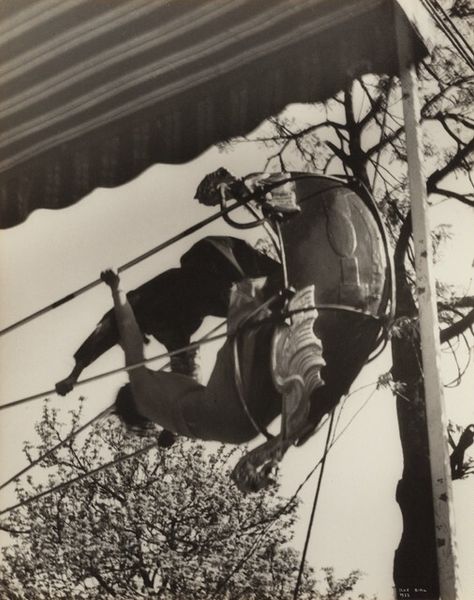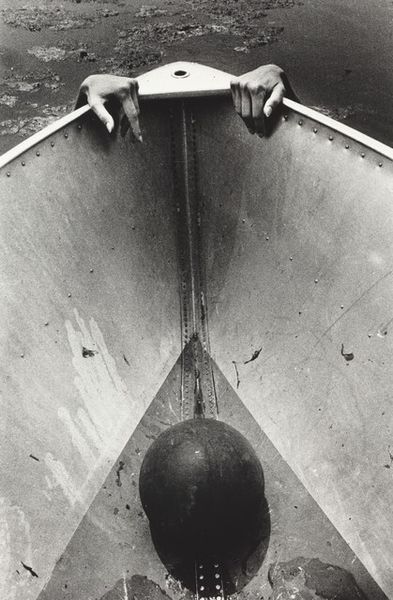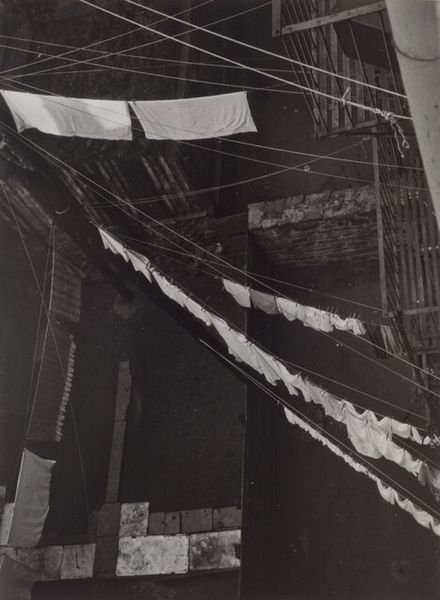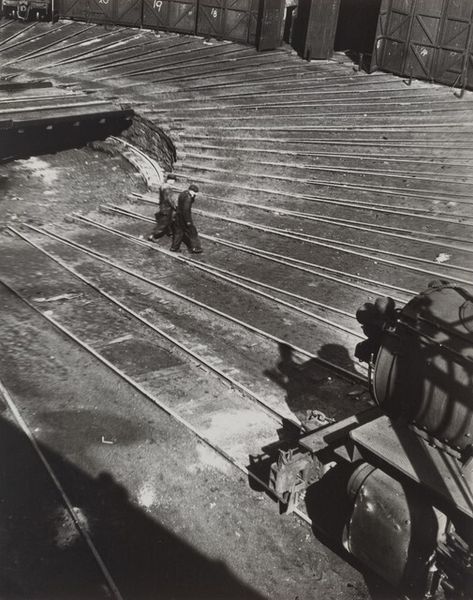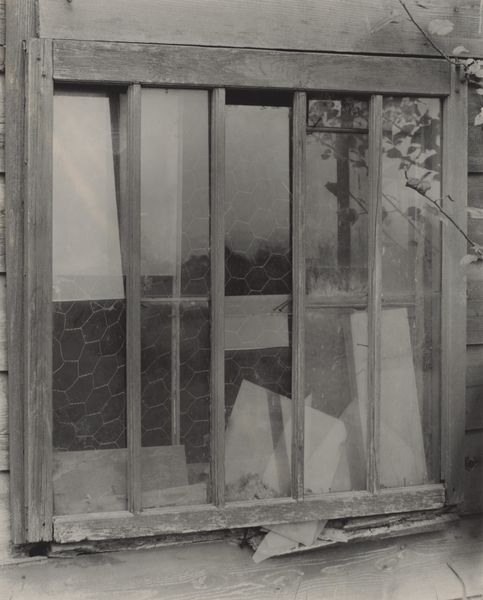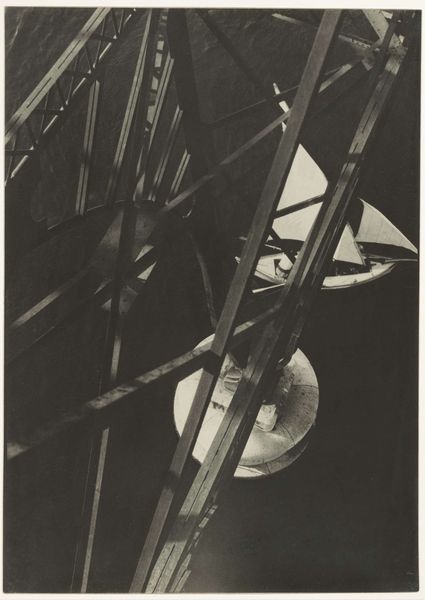
photography
#
photography
#
ashcan-school
#
cityscape
#
monochrome
#
realism
#
monochrome
Dimensions: image/sheet: 23.1 × 18.4 cm (9 1/8 × 7 1/4 in.)
Copyright: National Gallery of Art: CC0 1.0
Curator: Here we have Alma Lavenson's "Painting the Stack" from 1931, a striking photograph in monochrome. What are your first impressions? Editor: The scale is monumental! The diagonal sweep of the protective canvas dominates, leading my eye up to the men seemingly suspended in air painting this immense smokestack. There's a palpable sense of labor. Curator: Absolutely. Lavenson has captured a strong geometry here. Note how the cylindrical form of the stack is contrasted against the triangular drape, and the sharp, precise lines along the top of the ship create a planar grounding for the image. It's almost constructivist in its simplicity and strength. Editor: I am most captivated by what is involved in painting an object of that scale—the resources it requires and the sheer manual effort on display. The composition foregrounds the labor conditions; there's something starkly honest about documenting these men at work. Curator: And there's the interesting juxtaposition of the smoke stack's utilitarian form with the aesthetic gesture of painting. Lavenson draws attention to that dialogue. The very act transforms the industrial object into a site of pictorial interest. Editor: To extend that thought, let’s look at the surface texture itself. The rough, tactile presence of the metal contrasted with the billowing canvas directs the viewer’s focus not just to the finished, ‘clean’ image but rather highlights its raw state of upkeep—a kind of lived history. Curator: By obscuring sections and offering sharp focal points in other parts of the stack, she draws us to particular relationships between form and space in ways that echo Ashcan school interests and capture realism as well. The high contrast helps create a graphic language from everyday toil. Editor: Exactly, it underscores a vital record: labor. And to your point about echoing art movements of that period, it places a focus not just on geometric abstraction, but its lived social context too. It seems that for Lavenson, each brushstroke of paint here is as important as the photograph’s own tonal range. Curator: A wonderfully incisive reading, spotlighting the photo's composition, subject, and even political resonance—all framed within a singular aesthetic structure. Editor: Thank you. Likewise, appreciating it structurally opens an interesting discussion around labor history, which is why a deeper analysis proves so enlightening.
Comments
No comments
Be the first to comment and join the conversation on the ultimate creative platform.

